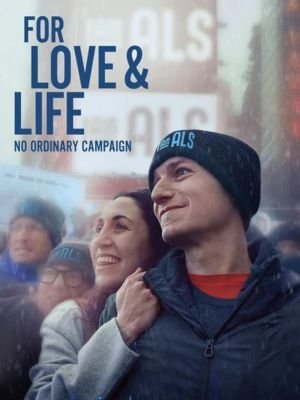
For Love & Life: No Ordinary Campaign Reflected on this movie, was there anyone who wondered what the money was for? Not many. Yet again, just like the aforementioned film; one could find a sliver of hope in such an “unforgiving and relentless” illness—the Ice Bucket Challenge.
“Do you know about Lou Gehrig?” The words that no doctor wants to hear are those seven most terrifying ones. They do not want to discuss with you the achievement records of New York Yankees’ “The Iron Horse.” Rather, they are preparing you for ALS (Amyotrophic Lateral Sclerosis), a progressive neurodegenerative disease affecting nerve cells within both brain and spinal cord which is usually fatal by 100%, typically 2-5 years after first signs of weakening muscles speaking or swallowing.
In another documentary called “For Life and Love: No Ordinary Campaign,” a doctor is heard saying that even with other severe diagnoses, there may be some times when symptoms can be delayed or alleviated somewhat. For Love & Life: No Ordinary Campaign A survival rate of only one percent from pancreatic cancer can still provide patients’ families some ray of hope. This is not so for ALS – at least not until Brian Wallach whose doctor asked him if he knew anything regarding Gehrig’s name while he was at thirty seven then tells him “There’s nothing we can do for you. Go home… live your life… travel everywhere… eat whatever… get your affairs in order.” Even as his wife and second baby were returning from hospital Wallach received his diagnosis.
For Love & Life: No Ordinary Campaign film is executive produced by journalist Katie Couric and Phil Rosenthal, showrunner for “Everybody Loves Raymond,” with pacing like a long news segment made by top professionals. Appealing, attractive, devoted, optimistic and dedicated are Sandra Abrevaya, Wallach’s wife, as well as Wallach himself. If he watched this happen to someone else that would be his honest reaction; the one patient currently doing better than anyone who has ever had the disease admitted that he would feel jealous. But he said to us that Wallach “holds those victories up like they’re his own.” There are other people with ALS and their families or bereaved children participating in this movie as well as doctors, politicians known by name and a couple of familiar faces. The movie effectively combines these most sorrowful moments with small glimmers of progress and hope in order to make an important point about paying attention to something easily disregarded.
Wallach was described by one family member as “just plain exhausting” and “always on point”—he is an attorney who spent much of his career working for the public interest. Some of this work included becoming assistant US Attorney, time on the Presidential campaign for Barack Obama where he met Abrevaya and his stint in the office of White House counsel. In answer to such devastating news therefore, Wallach saw opportunities here.
The invisibility of ALS patients was what infuriated him. He speaks about the issues which people are not willing to acknowledge until they meet face-to-face; poverty, racism and shortcomings in healthcare systems. Even within the system, ALS has been dismissed as hopeless. Wallach envisioned a way to put people with ALS and their caregivers and families in the center of a patient-focused project to think of it as only temporarily hopeless. That begins with being not just visible but unignorable. His goals are to get funding, visibility, and access to medication and disability funding for people with ALS.
The movie opens with Wallach joyously racing into Lake Michigan. Then, we see him a few years later on the same beach, using a walker. The movie does not let us look away from the ravages of the disease, but his dedication to improving the lives and prospects of people with ALS brims with generosity and optimism. By working with others, those with ALS, and their families, he can get Congress to double the funding for research and then double it again resulting in the first ever breakthrough of discovering a gene connected to one form of the disease. As one of the doctors explains anything we learn about nerves helps us understand all nerve-related diseases including Parkinson’s and Huntington’s.
Former football star Steve Gleason whose own documentary about his experience called “Gleason” vowed never testify before Congress or promote legislation but advocate instead. But then Wallach persuades him Legendary Washington DC lobbyist Dan Tate who also had ALS turned Wallach down more than once. However ,in one of this film’s tenderest moments he says that he agreed to help wallach because he wanted his children saw him fight .Wallach works towards speeding up social security disability payments while securing promising experimental medication for individuals suffering from ALS.
The best anyone hopes for now is a sort of relay race of drugs that will keep people alive long enough for better ones. Some day, some very smart people will come up with a way of making the disease chronic or even find a cure or a way to prevent it. And that will be because of Wallach and Abrevaya, and the people they brought together.
Also, Read On Fmovies
